Umru: Racconti da un paesaggio idrosociale
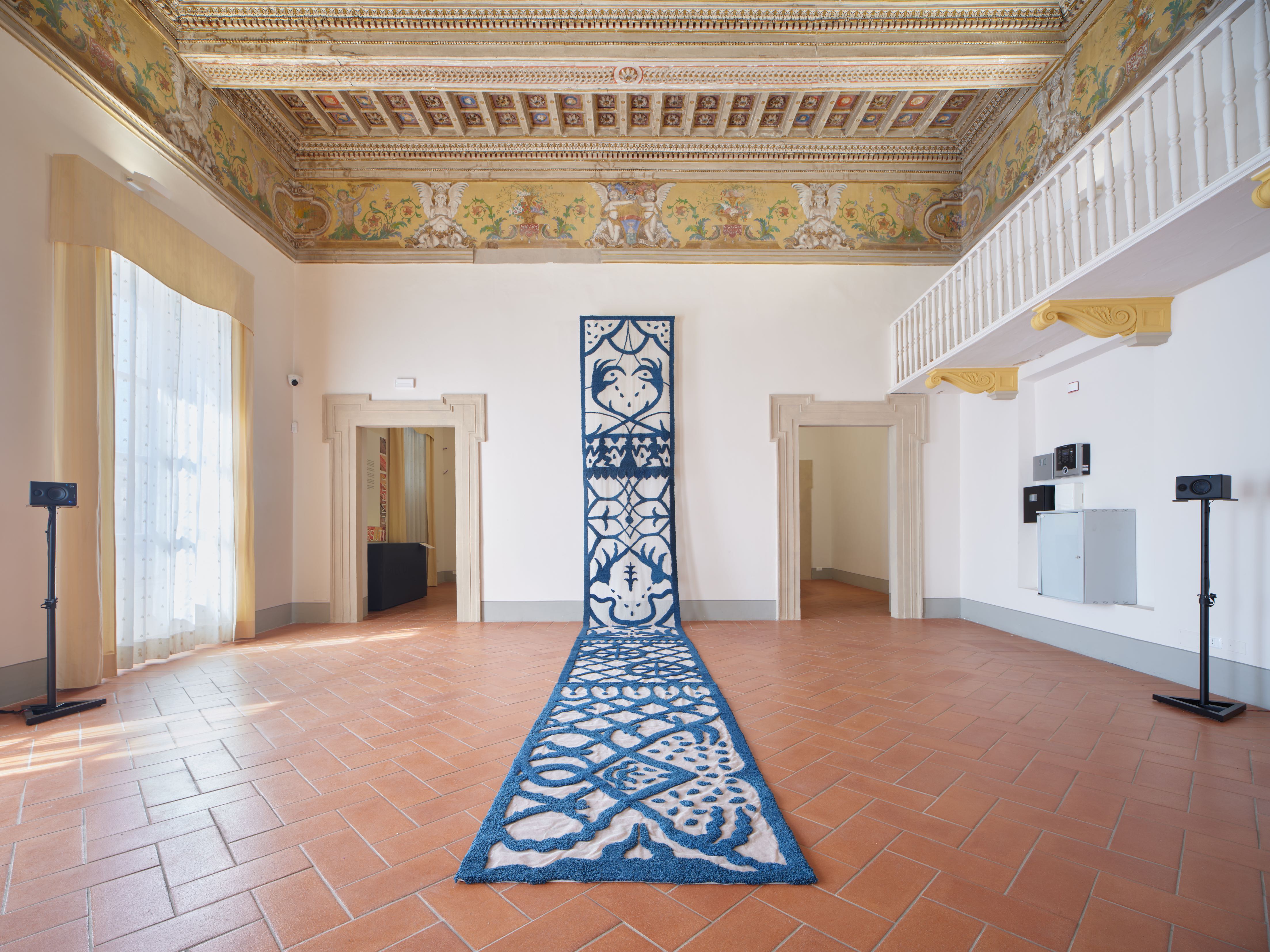
Umru: Racconti da un paesaggio idrosociale, Installation view at Museo del Tessile e del Costume, Spoleto, 2024. Photo: Giuliano Vaccai
Realised as a large-scale tapestry and sound installation, Umru: tales from a hydrosocial landscape is a collaborative project by artist Cecilia Ceccherini and geographer Alberto Valz Gris exploring how communities are defined by their access to water. The exhibition highlights the realities of water scarcity, whilst creating a poetic and reflective space to think through human-environment interactions in the context of climate collapse.
Political ecology describes water as a multiform and dynamic assemblage of both humans and nonhumans, of bodies and machines, of historical transformations and unpredictable futures. This reality is best captured by the term used by Ceccherini and Valz Gris, ‘hydrosocial landscapes’: “We are interested in asking how combining social scientific and mythopoetic ways of knowing can contribute to the understanding of current crises and shape alternative visions”.
Taking Spoleto and its environs as their starting point, Ceccherini and Valz Gris draw on diverse local subjects including the water symbolism in the story of St Felice and Mauro and the dragon, contested water sources used for the commercial bottling of drinking water, and the survival of a rare mountain shrimp in the Monti Sibillini national park. These stories are weaved into Ceccherini’s tapestry, which is titled Montagna madre di tutte le acque (Mountain, mother of all waters) using semi-abstract, interconnected symbols which highlight the nurturing, life-giving properties of water. Made with wool coloured blue using the sole plant of woad (guado) by the artist and her collaborator Maïté Oucèni, the colour and forms of the tapestry reference a variety of textile traditions from across the globe, including the tessuti alla Perugina, Umbrian textiles made between the 14th and 16th centuries which can be viewed in the first room of MUTECO. Meanwhile, Valz Gris’s experimental writing – interpreted by author Henry Albert and performed by sound artist giulia deval – processes these subjects and other hydrosocial references into five distinct feminine voices.
These voices, brought together in the audio installation titled Le Sibille ballano e la terra trema (The Sybils dance and the Earth trembles) can be listened to collectively or individually. In some cases they speak Italian, in others they use the voice to express the subject in an onomatopoeic or allusive manner. The female characters, which also informed the development of Ceccherini's tapestry, can be identified accordingly:
LA MADRE / THE MOTHER
A young mother recounts how she met her daughter's father at a well whilst he was traveling between two monasteries. Their encounter produces much rage and at least one miracle.
LA NUTRICE / THE WET NURSE
A voyage through a dream and a dream through a voyage. A wet nurse takes care of two saints, following them across the ocean and deep into a sunken swamp to confront a dragon.
LA PREGHIERA / THE PRAYER
A prayer in five parts directed to five recipients, incorporating more than one expression of spirituality, all recognising water as sacred.
LA SIBILLA / THE SYBIL
When an oracle speaks, one is not supposed to understand the superficial value of words but rather the unexpressed presence of a message. It is like water coming from the belly of a mountain.
LA PIETRA / THE STONE
What does it take to turn a boulder into a pebble? Its journey through water, told through sound, understood through listening, and implying empathy.
The characters take inspiration from a legendary fortune-telling prophetess ‘Sibilla’, a medieval sibyl who gives her name to the Monti Sibillini close to Spoleto. As her counterparts did in Ancient Greece, these oracles predict the future and act as a sorceress and muse. Sibyls’ speeches were unintelligible, they used to speak in a vague and incoherent way to give signs more than solutions for the future. In the same way, the stories from Umru are whispered to us. The sibyls that relate these stories are inviting us to embrace an attitude of care and wisdom in relation to the earth and all the living beings that inhabit it.
The second Umru room in MUTECO presents research photographs, tapestries and texts which will be compiled in a forthcoming publication. The publication will pivot on five extended texts by Valz Gris titled Cura (Care), Conflitto (Conflict), Dialogo (Dialogues), Sopravvivenza (Survival), and Mito (Myth). The texts elaborate on the five central research stories from which the tapestry and audio-installation take their inspiration. The screen shows the Sopravvivenza and Mito stories.
The project has been developed during a series of research residencies hosted by the Mahler & LeWitt Studios, beginning in 2022. Ceccherini, who first visited Spoleto as part of Lucy Orta's 'Art for the Environment' program with the University of the Arts London, has collaborated with French textile designer and natural dyeing expert Maïté Oucèni to dye the wool needed for the tapestry. Oucèni, who was a resident at the Mahler & LeWitt Studios in 2022 in partnership with the Ethical Fashion Initiative and supported by the Carla Fendi Foundation, hosted a public workshop with Ceccherini and dyed the wool using woad, a blue pigment indigenous to Italy and harvested in Umbria until the global Indigo market took over.
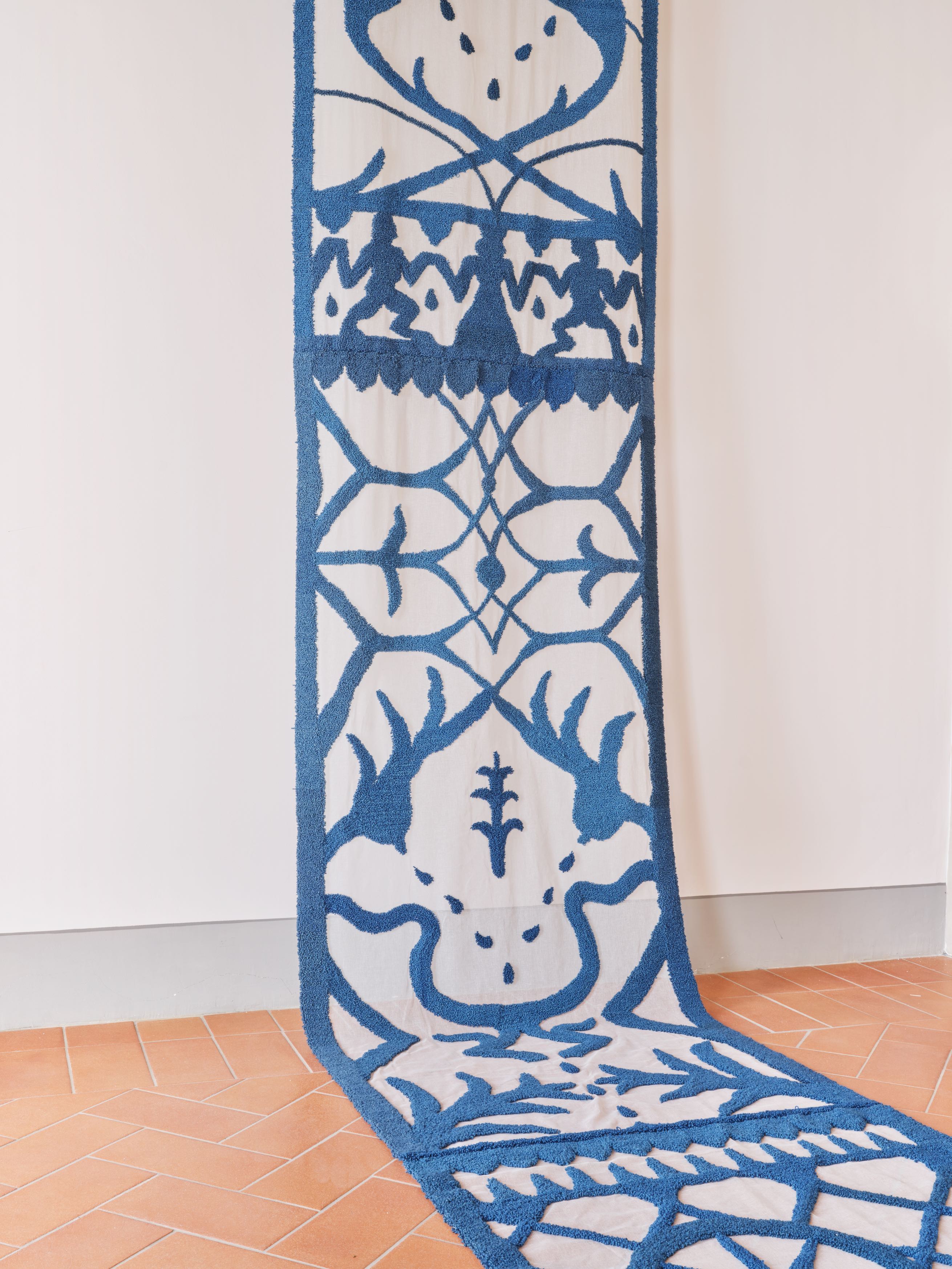
Montagna madre di tutte le acque, hand-tufted natural dyed wool on gauze canvas, 2024. Photo: Giuliano Vaccai
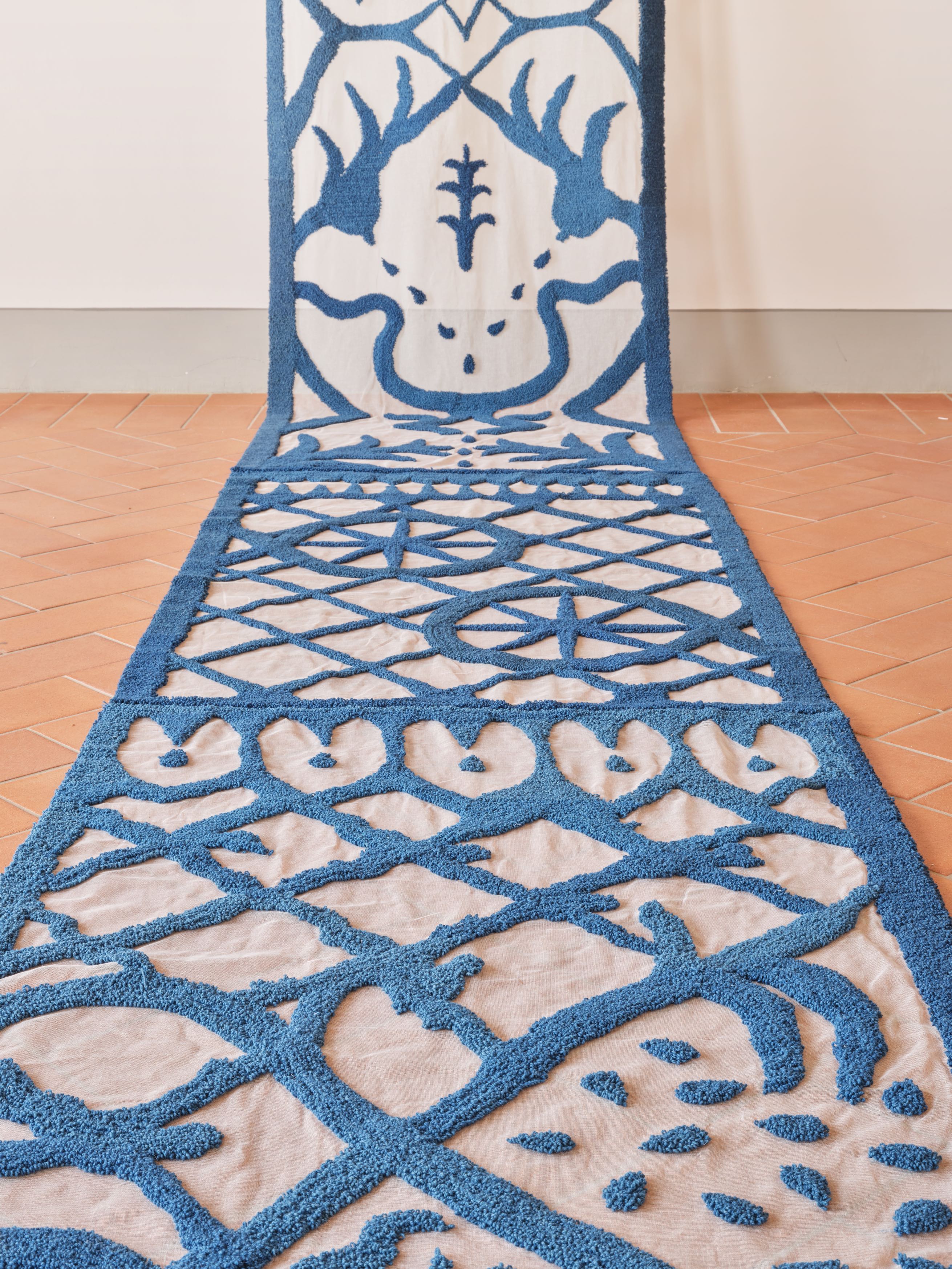
Montagna madre di tutte le acque, hand-tufted natural dyed wool on gauze canvas, 2024. Photo: Giuliano Vaccai
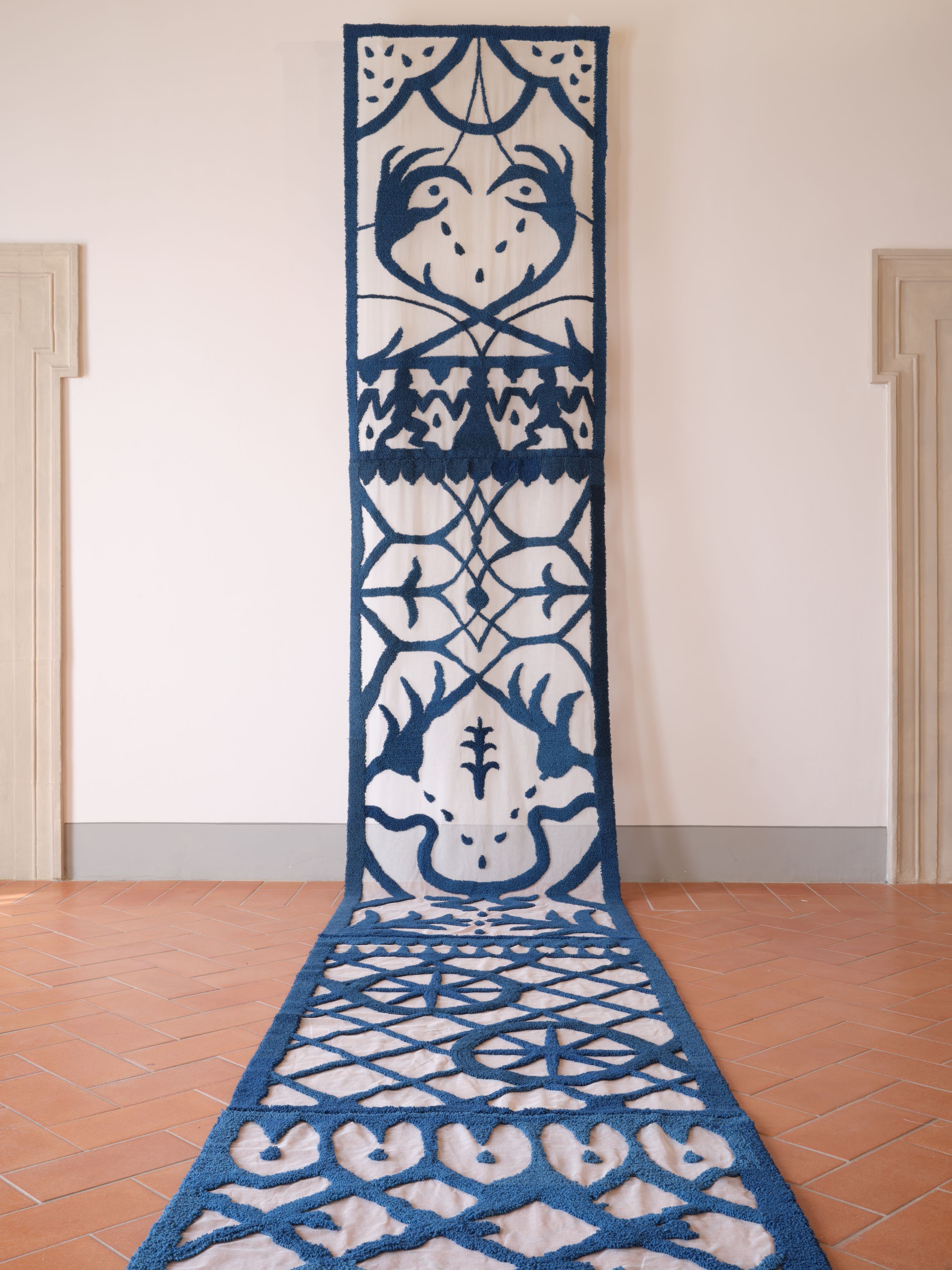
Montagna madre di tutte le acque, hand-tufted natural dyed wool on gauze canvas, 2024. Photo: Giuliano Vaccai
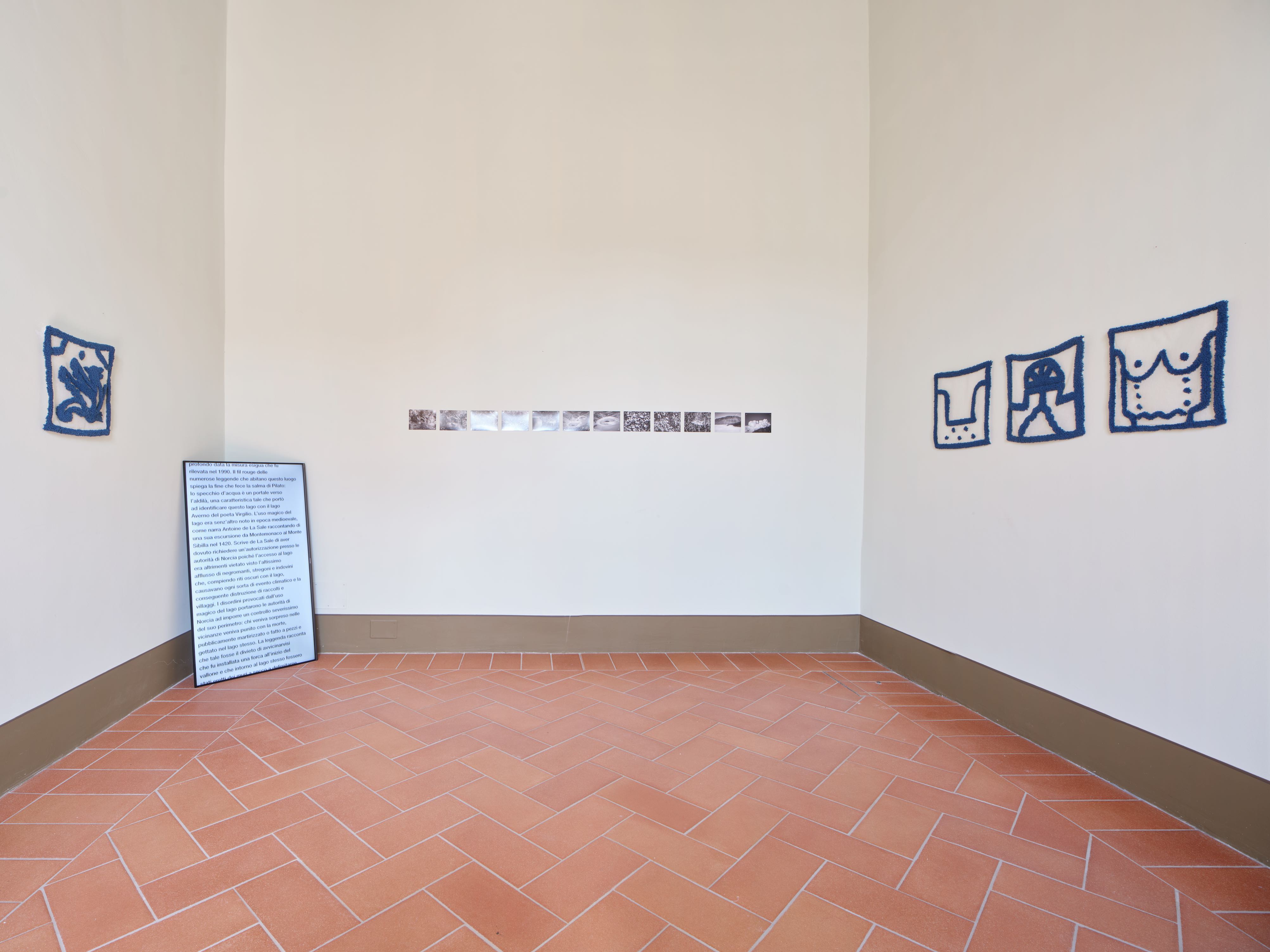
Umru: Racconti da un paesaggio idrosociale, Installation view at Museo del Tessile e del Costume, Spoleto, 2024. Photo: Giuliano Vaccai
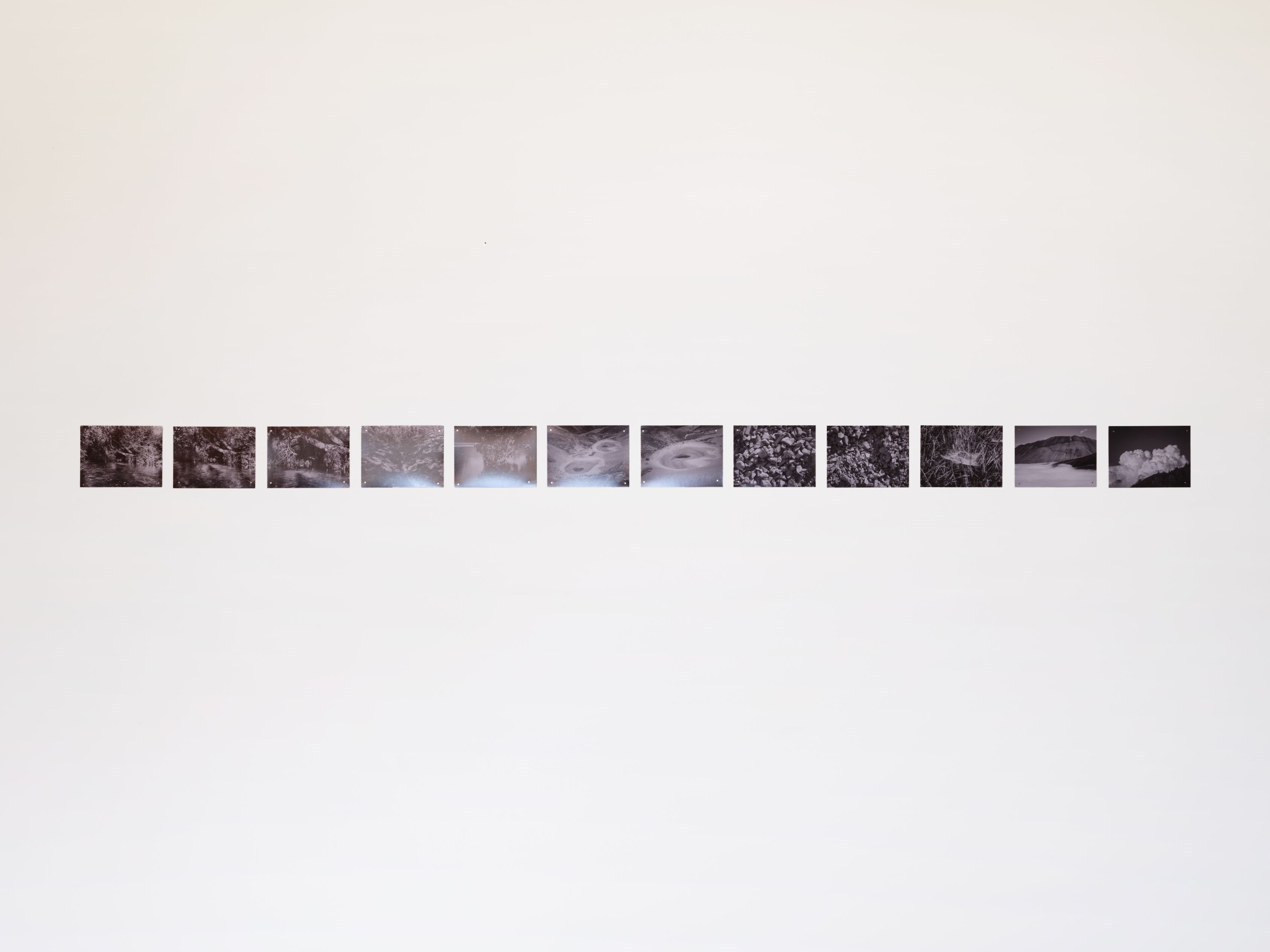
Umru: Racconti da un paesaggio idrosociale, Installation view at Museo del Tessile e del Costume, Spoleto, 2024. Photo: Giuliano Vaccai
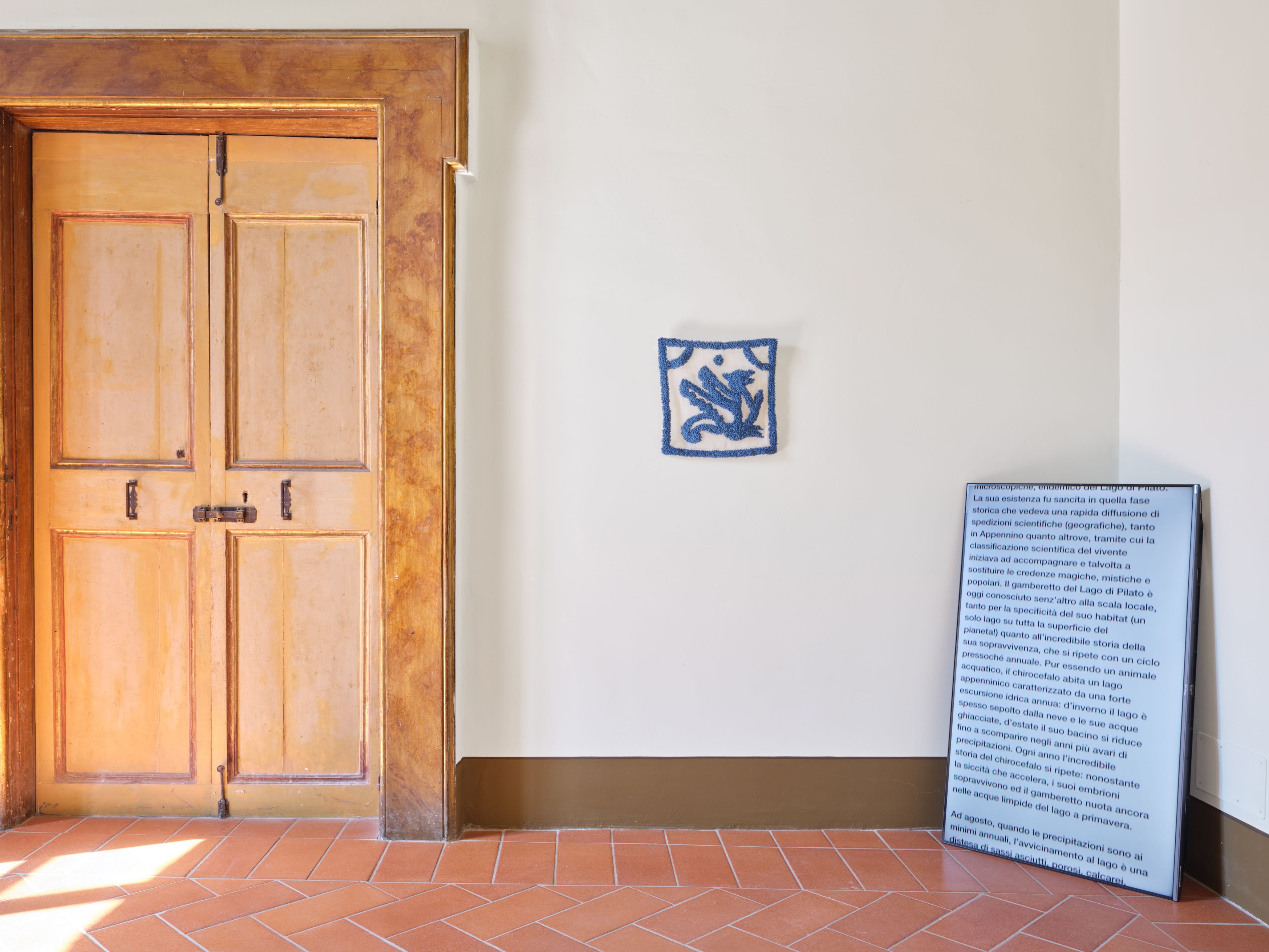
Umru: Racconti da un paesaggio idrosociale, Installation view at Museo del Tessile e del Costume, Spoleto, 2024. Photo: Giuliano Vaccai
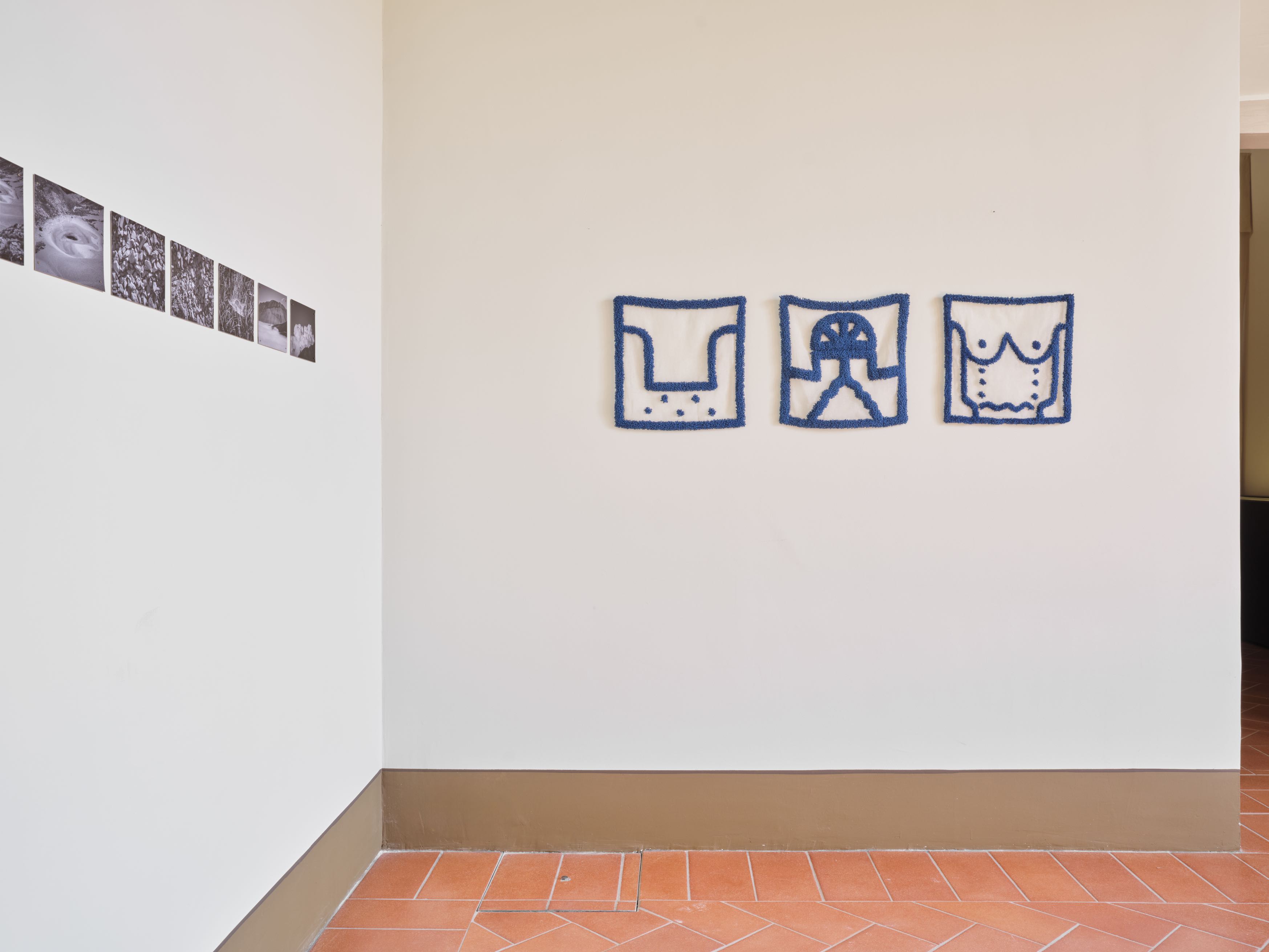
Umru: Racconti da un paesaggio idrosociale, Installation view at Museo del Tessile e del Costume, Spoleto, 2024. Photo: Giuliano Vaccai